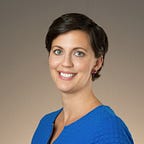Measuring High Quality, Student-Centered Learning
At the Nellie Mae Education Foundation, we support schools and communities that are working to reshape education to be more student-centered — where learning is personalized, competency-based, happens anytime, anywhere, and where students take ownership over their own learning. But what does high quality, rigorous student-centered learning actually look like in practice? That’s the question that the Foundation, in partnership with the RAND Corporation, has been looking to answer over the past year.
Our team has been working hand in hand with teachers, school leaders, and researchers to develop a set of criteria that detail the characteristics of high-quality, student-centered learning in classrooms, schools, and districts — a Student-Centered Learning Continuum (SCL Continuum). This continuum represents a research-based definition of student-centered learning, and is based upon a year of work with RAND’s education team, who conducted a thorough review of literature and tools used to measure student-centered learning and consulted experts in the field. We hope this definition provides clarity about the innovative ways in which classrooms, schools, and districts approach student-centered learning.
Along with the Continuum, RAND and the Foundation are planning to release a toolkit to help schools and districts understand how student-centered learning is implemented in their communities. The toolkit will be comprised of six instruments — student, teacher, school leader, and district leader surveys; a teacher log; and a student focus group protocol — that provide an opportunity for educators and leaders to formatively assess and reflect upon the ways in which their learning environments integrate the tenets of student-centered learning.
Our hope is for the SCL Continuum to be a living document, updated over time based on the input of practitioners who are working to champion student-centered practices every day. After all, educators know best about cutting-edge practices, and the context in which classrooms, schools and districts operate. We know that the large-scale implementation of student-centered practices cannot happen without a key set of clear, measurable, and testable principles. Ultimately, we see this set of criteria guiding schools and districts in their move towards re-envisioning teaching and learning.
We plan to release the SCL Continuum this winter, and hope you will provide feedback on it! Stay up to date on the release by signing up for the Foundation’s Research Pulse email alerts.
